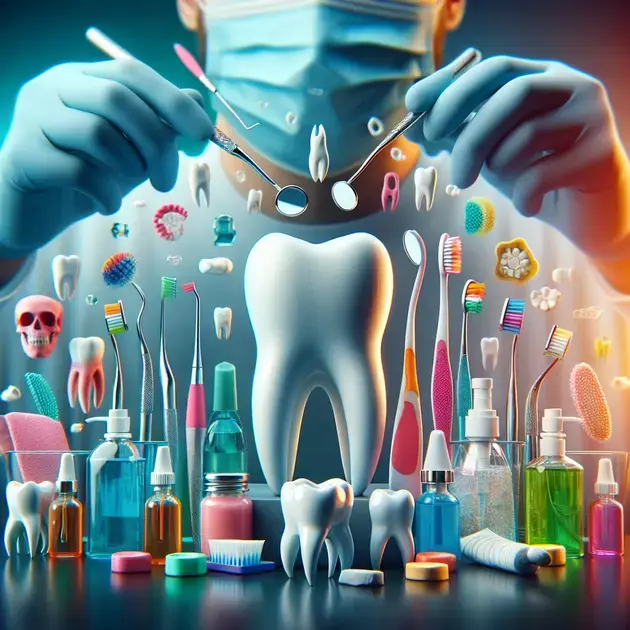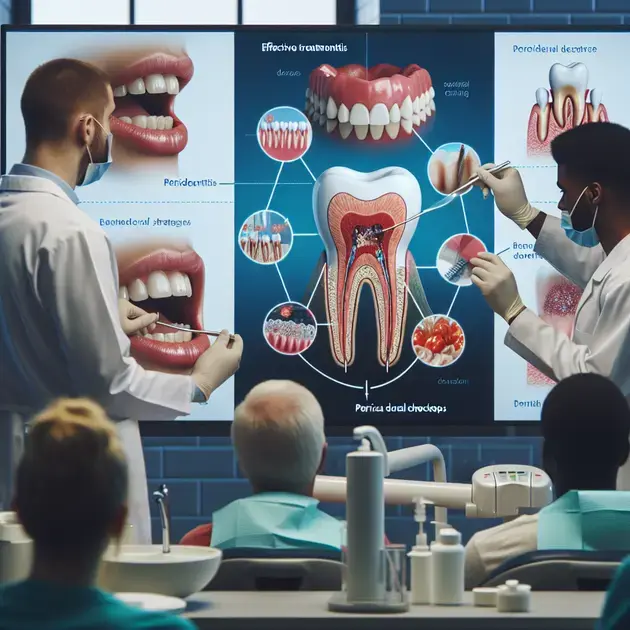Are you seeking effective medication for periodontitis? Look no further! This comprehensive guide will provide you with all the information you need to combat this common dental issue.
Periodontitis is a serious gum infection that can lead to major health problems if left untreated. Fortunately, there are a variety of treatments available that can help you manage and eliminate the symptoms of periodontitis. In this guide, we will explore the most effective medications and strategies to help you regain control of your oral health.

Discover the Best Medication for Periodontitis
When looking for the best medication for periodontitis, it is essential to consult with a dentist or periodontist to determine the most suitable treatment based on the severity of the condition. One of the most common medications prescribed for periodontitis is antibiotics, such as doxycycline or minocycline, which can help to reduce bacteria and inflammation in the gums. These antibiotics are often prescribed in conjunction with other treatments, such as deep cleanings or surgical procedures.
Another type of medication that may be recommended for periodontitis is antimicrobial mouth rinses, such as chlorhexidine. These mouth rinses can help to reduce bacteria in the mouth and promote healing of the gums. It is important to follow the instructions provided by the dentist or periodontist when using these mouth rinses to ensure effectiveness.
In some cases, medications such as enzyme suppressants may be prescribed to help prevent the body from breaking down bone and connective tissue in the gums. These medications can help to slow down the progression of periodontitis and preserve the health of the gums and teeth.
It is important to remember that medication alone may not be sufficient to treat periodontitis effectively. It is crucial to maintain good oral hygiene practices, such as brushing and flossing regularly, and scheduling regular dental check-ups to monitor the condition and adjust treatment as necessary.
Understanding Periodontitis Symptoms and Risks
Periodontitis is a serious gum infection that can lead to significant health risks if left untreated. Common symptoms of periodontitis include swollen, red, or bleeding gums, persistent bad breath, receding gums, and loose or sensitive teeth. If you experience any of these symptoms, it is important to seek dental treatment promptly to prevent the condition from worsening.
Untreated periodontitis can increase the risk of developing other health issues, such as heart disease, diabetes, and respiratory infections. The inflammation and bacteria present in the gums can enter the bloodstream and affect other parts of the body, highlighting the importance of addressing periodontitis promptly and effectively.
Regular dental check-ups are essential for detecting periodontitis in its early stages and preventing complications. During a dental exam, the dentist will assess the health of your gums, measure the depth of periodontal pockets, and recommend appropriate treatment based on the severity of the condition.
By understanding the symptoms and risks associated with periodontitis, individuals can take proactive steps to maintain their oral health and overall well-being. Practicing good oral hygiene, eating a balanced diet, and avoiding tobacco products can help reduce the risk of developing periodontitis and ensure long-term dental health.
Effective Treatment Strategies for Periodontitis
Treating periodontitis effectively requires a comprehensive approach that addresses the underlying causes of the condition and targets the infection in the gums. One of the most common treatment strategies for periodontitis is scaling and root planing, a deep cleaning procedure that removes plaque and tartar from the teeth and roots to promote healing of the gums.
In cases where periodontitis has progressed to a more advanced stage, surgical treatments such as flap surgery or bone grafting may be necessary to repair damaged gum tissue and bone structure. These procedures can help to restore the health and function of the gums and prevent further deterioration of the teeth.
Adjunctive therapies, such as laser therapy or antimicrobial mouth rinses, may also be recommended to enhance the effectiveness of treatment and reduce the risk of recurrence. These therapies can help to eliminate bacteria in the gums and promote healing without the need for invasive procedures.
It is important for individuals undergoing treatment for periodontitis to follow the aftercare instructions provided by their dentist or periodontist carefully to ensure the best possible outcome. Maintaining good oral hygiene practices, attending follow-up appointments, and making lifestyle changes, such as quitting smoking, can help to support the success of treatment and prevent future flare-ups of the condition.

**Best Practices for Periodontitis Treatment**
Daily Oral Hygiene Routine
Step 1: Brushing
Brushing your teeth at least twice a day is essential for preventing periodontitis. Use a soft-bristled toothbrush and fluoride toothpaste to gently clean all surfaces of your teeth, including along the gumline. Make sure to brush for at least two minutes each time to effectively remove plaque and bacteria.
Step 2: Flossing
In addition to brushing, flossing daily is crucial for removing plaque and food particles from between your teeth. Be gentle when flossing to avoid injuring your gums, and make sure to reach all the way down to the gumline to thoroughly clean each tooth.
Step 3: Mouthwash
Using an antimicrobial mouthwash can help reduce bacteria in your mouth and prevent gum disease. Rinse with mouthwash after brushing and flossing to further clean hard-to-reach areas and freshen your breath.
Regular Dental Check-ups
Step 1: Schedule Routine Visits
Visiting your dentist for regular check-ups and cleanings is crucial for maintaining good oral health and catching any early signs of periodontitis. Make sure to schedule appointments at least every six months to have your teeth and gums examined by a professional.
Step 2: Professional Cleanings
During your dental visits, your hygienist will perform a professional cleaning to remove plaque and tartar buildup that regular brushing and flossing may have missed. This thorough cleaning will help prevent gum disease and keep your teeth and gums healthy.
Step 3: Early Intervention
If your dentist detects any signs of gum disease during your check-up, they may recommend additional treatments to prevent its progression. Following their advice and seeking early intervention can save you from more extensive and costly procedures down the line.
Healthy Lifestyle Choices
Step 1: Balanced Diet
Eating a nutritious diet rich in fruits, vegetables, lean proteins, and whole grains can support your overall health, including your oral health. Avoid excessive sugar and processed foods, which can contribute to plaque buildup and gum inflammation.
Step 2: Avoid Tobacco
Smoking and using tobacco products can significantly increase your risk of developing periodontitis and other oral health issues. Quitting smoking can not only improve your oral health but also your general well-being.
Step 3: Manage Stress
Chronic stress can weaken your immune system and make you more susceptible to infections, including gum disease. Practicing stress-reducing techniques such as meditation, yoga, or exercise can help support your immune system and promote oral health.
**
Conclusion
**
In conclusion, maintaining a strict daily oral hygiene routine is paramount in the prevention of periodontitis. The combination of regular brushing, flossing, and using mouthwash can effectively eliminate plaque and bacteria, safeguarding your gums and overall oral health. These simple yet essential steps play a pivotal role in keeping periodontal diseases at bay and promoting a healthy mouth.
Regular dental check-ups are equally vital for detecting any early signs of gum disease. By scheduling routine visits every six months, you allow dental professionals to conduct thorough examinations, identify potential issues, and provide necessary interventions promptly. Professional cleanings during these visits further ensure the removal of plaque and tartar buildup, reducing the risk of gum diseases and maintaining optimal oral hygiene.
Furthermore, healthy lifestyle choices significantly impact your oral health. A balanced diet rich in nourishing foods supports your overall health, while avoiding tobacco products can significantly decrease the risk of periodontitis and other oral complications. Managing stress through various techniques such as meditation or exercise not only bolsters your immune system but also mitigates the likelihood of gum disease development, highlighting the interconnected nature of physical and mental well-being.
By following these best practices diligently, you can proactively safeguard your oral health and prevent the progression of periodontitis. Remember, a proactive approach to oral hygiene and regular dental care are key in ensuring a healthy smile and overall well-being.
Finish It!



